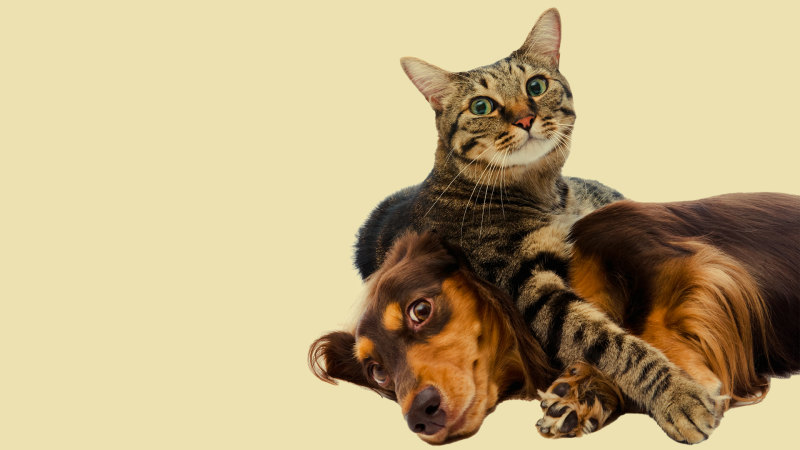Published on PetFriends | By PetFriends Editorial Team
When we look into our pets’ eyes, it’s hard not to wonder what’s going on inside their minds. Are they happy? Scared? Excited? More importantly, can they truly experience complex emotions like humans do?
At PetFriends, we believe understanding pet emotions is key to building stronger bonds and providing better care. Today, we’re diving into the fascinating science behind what pets feel, how they express emotions, and what it means for us as their caregivers.

What Are Emotions, Anyway?
Emotions are complex psychological and physiological responses to stimuli, involving feelings, behaviors, and changes in the body. In humans, emotions range from simple joy and fear to more complex feelings like jealousy or empathy.
The big question for pet owners and scientists alike: Do pets experience similar emotions?

Pets and Basic Emotions: What Science Says
Studies show that many animals, especially mammals and birds, experience basic emotions such as:
- Joy and happiness: Tail wagging, purring, playful behaviors.
- Fear and anxiety: Hiding, trembling, avoidance.
- Anger and frustration: Growling, hissing, snapping.
- Affection and bonding: Nuzzling, licking, staying close.
Dogs, for instance, have been found to release oxytocin—the so-called “love hormone”—when interacting with their owners, just like humans do during bonding moments.
:quality(75))
Beyond the Basics: Can Pets Feel Complex Emotions?
Emerging research suggests some pets may also feel more nuanced emotions:
- Jealousy: Dogs have shown jealousy-like behaviors when their owners pay attention to another dog or person.
- Empathy: Some animals can respond emotionally to their owner’s distress.
- Grief: As we explored in our last post, many pets mourn the loss of companions.
Understanding these emotions helps us interpret their behavior with more empathy and patience.

How Do Pets Show Their Emotions?
Since pets don’t speak our language, they rely on body language and vocalizations. Here are some common emotional signals:
Dogs
- Tail wagging: Usually happiness or excitement.
- Ears back: Fear, submission, or anxiety.
- Whining or barking: Vary depending on context—stress, alert, attention-seeking.
- Relaxed body: Contentment.
Cats
- Purring: Contentment, sometimes self-soothing.
- Tail twitching: Annoyance or excitement.
- Slow blinking: Trust and affection.
- Hissing or growling: Fear or aggression.
Birds
- Singing or chirping: Happiness.
- Feather fluffing: Relaxation or cold.
- Wing flapping: Exercise or excitement.
- Beak clicking: Warning or irritation.
How to Respond to Your Pet’s Emotions
Recognizing and validating your pet’s feelings helps build trust and a deeper connection. Here are some tips:
- Observe carefully: Notice changes in behavior or body language.
- Create a safe space: Ensure your pet has a quiet, comfortable spot.
- Use positive reinforcement: Reward calm, happy behaviors.
- Avoid punishment: Punishing emotional expressions can harm trust.
- Spend quality time: Bond through play, cuddles, and training.
The Emotional Benefits for Humans
The emotional connection with pets isn’t one-sided. Interacting with pets can:
- Lower stress and anxiety
- Reduce feelings of loneliness
- Improve heart health
- Boost overall happiness
This mutual emotional exchange makes the human-pet bond uniquely powerful.
The Future of Pet Emotion Research
Scientists continue to explore animal cognition and emotion with new technologies like:
- Brain imaging: Studying pet brain activity.
- Wearable monitors: Tracking heart rate and stress.
- AI behavior analysis: Understanding subtle emotional cues.
As our understanding grows, so will our ability to care for pets in emotionally intelligent ways.
Final Thoughts: Listen With Your Heart and Eyes
Pets may not speak in words, but their emotions speak volumes if we’re willing to listen. By paying close attention and responding with empathy, we enrich their lives—and ours.
At PetFriends, we’re committed to helping you build these emotional bridges with your furry, feathered, or scaled friends.
Share Your Pet’s Emotional Moments!
Have you witnessed your pet showing surprising emotions? Tell us your story in the comments or tag #PetFriendsEmotions on social media!
For more insights into pet behavior and care, explore our blog library or subscribe to our newsletter.
PetFriends | Because understanding is the first step to love.

